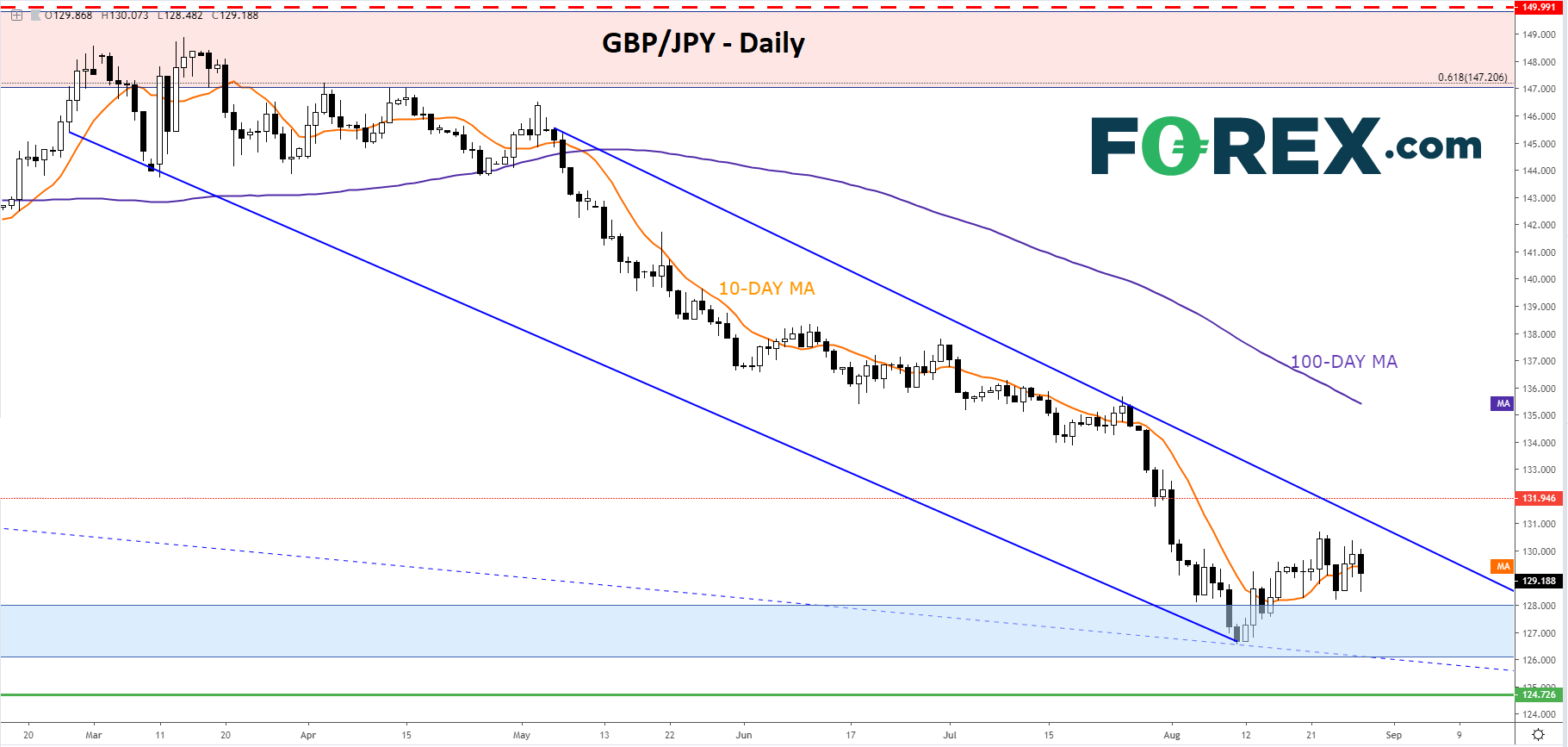Sterling faces its biggest setback for weeks on Prime Minister Boris Johnson’s plan to suspend Parliament
The Queen’s Speech—the traditional event that opens a new session of Parliament after the summer recess—will take place on 14th October, later than usual. Johnson plans a “very exciting” domestic agenda for the forthcoming session. Before then, Parliament will be suspended for more than a month from 12th September. The impact of the news on sterling has been its deepest one-day drop in almost four weeks, with a fall against the dollar of around 130 pips in the hour after reports emerged and sterling/dollar still 0.8% lower on the day into the afternoon.
Still, there are signs of restraint in the market reaction. The pound quickly erased around a half of its loss in the immediate aftermath of its slump, before slipping again, though it has held around the 50% mark of its slide. Sterling implied volatility across terms spanning one month or more remains elevated relative to July floors. But like shorter-term measures of how much options traders expect the pound to swing, it is not rocketing.
The reaction looks calibrated to the view that whilst the PM may be pushing the envelope, he is not aggressively suppressing Parliamentary sovereignty.
The plan will see PM Johnson utilising normal procedure to delay Parliament’s normal opening date. So there’s no question of him deploying controversial extraordinary powers. Additionally, the move will not be the type of suspension over which there has been broad apprehension across Westminster. In that case, the new session would already be under way.
But there’s less doubt that the plan is a ploy. As such it has stoked fury amongst politicians opposed to Johnson’s push to leave the EU with or without a deal by the EU’s 31st October deadline. Their view is that the tactic will essential limit the ability of the house to prevent the government from taking Britain out of the EU without a deal, by keeping the House shut for longer than expected. That would leave just over two weeks for normal debate before the Brexit deadline on Halloween. Parliament would also be resuming just days before an EU summit.
The Speaker of the House, John Bercow, joined a number of MPs in dubbing the move a “constitutional outrage”. As we’ve seen, that may not be a strictly accurate accusation, but the distinction is probably immaterial. The development may not make a great deal of difference to a Brexit outcome that will be a tortured one either way. But the government’s decision to agitate opponents of a no-deal Brexit could still accelerate Britain’s headlong plunge into a deepening political crisis.
This is chiefly because the planned suspension emboldens MPs who had been seeking a no-confidence vote that could collapse the government. Labour’s plan to pass a bill that would block ‘no-deal’ and force the government to seek an extension – as opposed to going for a no-confidence vote—has been gaining ground in recent days, despite conditions many parties find onerous. Now, MPs, such as the pro-EU Conservative Dominic Grieve are suggesting that choices may be narrowing again. Parliament returns from its recess next week, and a vote of no-confidence could be back on the cards.
If so, the perception that such an event could push Britain faster and harder into a General Election—a prospect the market really doesn’t relish—will increase. In turn, the pound’s ability to limit its reaction to a retreat instead of a rout, will again be in question.
Chart thoughts
The broader uncertainty of the times has seen traders particularly favouring bearish sterling trades against in-demand ‘safe-haven’ currencies, with the yen preeminent. In recent weeks though, marginal political stability and hardening plans to block no-deal have enabled sterling to recoil from multi-year lows. However, despite sterling/yen’s 3%-odd move higher after grinding to as low as ¥126.53 on 11th August, it did not escape the confines of the downdraft—and declining channel in formation—it entered since its most recent rejection of highs above roughly ¥147-¥150. That band is in confluence with a 61.8% marker of GBP/JPY’s three-year advance to a ¥195.8 cycle peak in 2015. It has stymied the rate’s attempts to break higher since May 2018. The barrier keeps downward pressure on GBP/JPY intense, as affirmed by the falling trend of moving averages right out to the 100-day. On the downside, the region of October 2016’s consolidation coincided with the rate’s bounce at the beginning of the month, which also tagged the downtrend line that kicked off on 11th September 2017. The stage is set for an even deeper dramatic breakdown—but only if the region of support begins to crumble in short order. Destruction of 11th August swing low would hike bearish probabilities. Sellers would then target their next major prize: 11th October 2016’s sharp spike low of ¥124.7.
GBP/JPY – Daily
Source: FOREX.com





